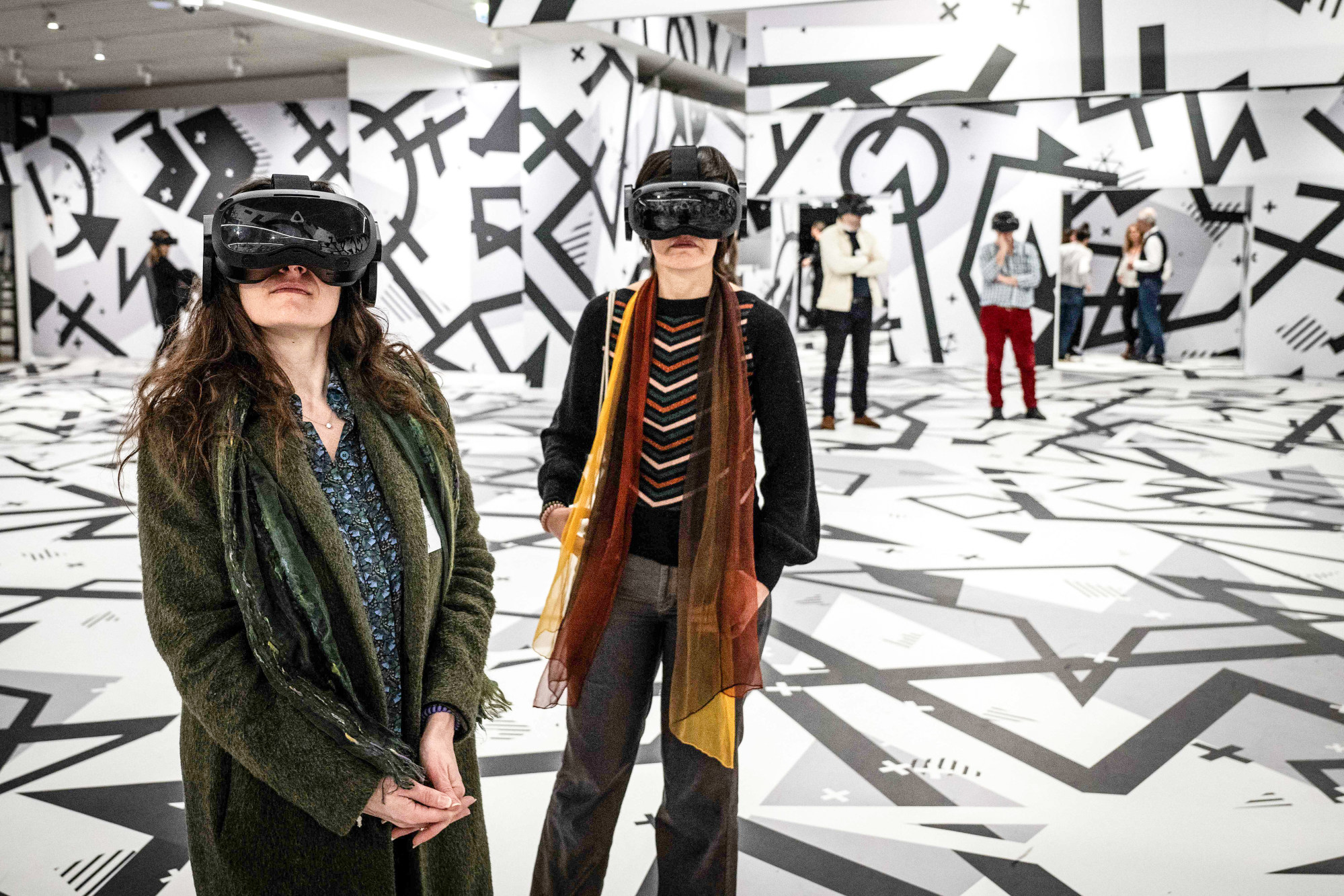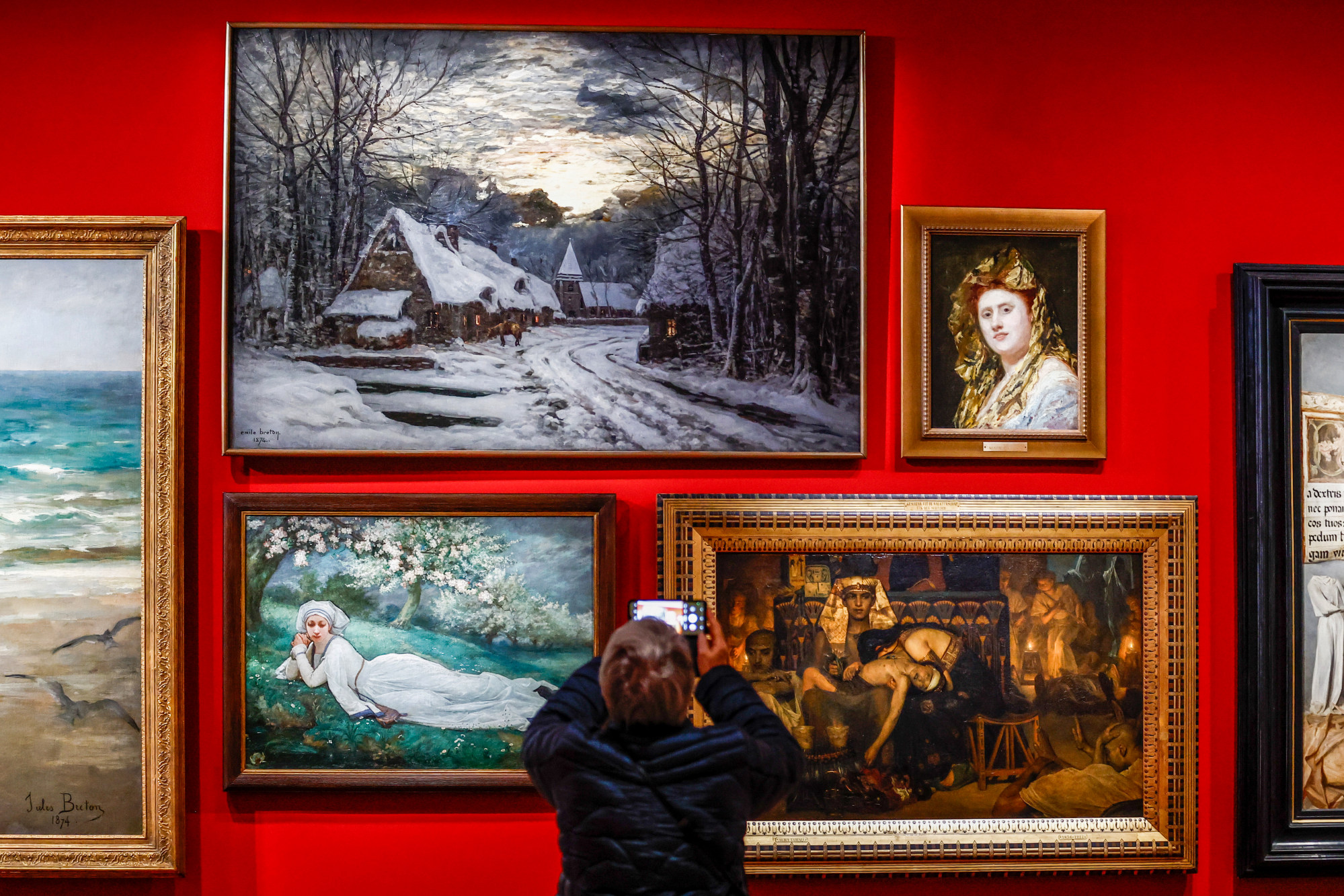
150 years of Impressionism marked at Paris’ Orsay Museum, where VR lets visitors walk with Monet and Cézanne
- To mark 150 years of Impressionist painting, Paris’ Orsay Museum takes visitors to where the art movement began through the use of virtual-reality headsets
- Its Paris 1874: Inventing Impressionism exhibition groups 160 Impressionist works, including paintings by Monet, Degas, Cézanne, Renoir and Pissarro
The Orsay Museum in Paris is marking 150 years of Impressionist painting with an unprecedented reassembling of the masterpieces that launched the movement, and a virtual-reality (VR) experience that takes visitors back in time.
Using VR technology, visitors to “Paris 1874: Inventing Impressionism” can take a plunge into the streets, salons and beauty spots that marked a revolution in art.
Through VR helmets, they can walk alongside the likes of Claude Monet, Edgar Degas and Paul Cézanne on April 15, 1874, when, tired of being rejected by the conservative gatekeepers of the art Salon (the official art exhibition of French learned society Académie des Beaux-Arts), these rebellious young painters put on their own independent show, later seen as the birth of Impressionism.
The Orsay has brought together 160 paintings from that year, including dozens of masterpieces from that show, including the blood-red sun of Monet’s Impression, Sunrise, credited with giving the movement its name, and his Boulevard des Capucines where the exhibition took place.

In rapid, spontaneous brushstrokes, the Impressionists captured everyday scenes of modern life, from Degas’ ballet dancers to Camille Pissarro’s countryside idylls to Auguste Renoir’s riverside party in Bal du Moulin de la Galette.
They came to define the excitement and restlessness of a new, modern age emerging out of a devastating war with Prussia and a short-lived Parisian revolt a few years earlier.

“The Impressionists wanted to paint the world as it is, one in the midst of major change,” says Sylvie Patry, co-curator of the exhibition.
“They were interested in new subjects: railways, tourism, the world of entertainment … They wanted to put sensations, impressions, the immediate moment at the heart of their painting,” she adds.
Thanks to loans from the National Gallery of Art in Washington and other museums, it is the first time that many of the paintings – including Renoir’s The Parisian Girl and The Dancer – have hung together in 150 years.
From The Louvre to New York, 10 places to see dazzling ceiling art
The exhibition also includes works from that year’s official Salon, showing how the Impressionists rejected the stiff formalism of traditionalists and their obsession with great battles and mythological tales, but also how there was some crossover, as all sorts of painters gradually adopted new styles.
“The story of that exhibition is more nuanced than we think,” says Patry. “The artists all knew each other and had begun painting in this different style from the 1860s.”
Impressionism did not take off immediately: only some 3,500 people came to the first show, compared with 300,000 to the Salon, and only four paintings were sold out of some 200 works.

It would take several more exhibitions in the following years for the movement to make its mark.
Interestingly, the venue of the 1874 exhibition – in the studio of photographer Felix Nadar – reflected the strong influence cameras had on the movement.
Impressionism came of age at the same time as still photography, with tripods and cameras being set up next to painters’ easels.
Hong Kong Art Week: all the must-see fairs, exhibitions and events
Some artists dabbled themselves. Degas was an amateur photographer and Cézanne used photographs as studies for some of his works.
Monet’s Boulevard des Capucines was painted from Nadar’s balcony, with the blurred silhouettes of the crowd capturing the influence of early photographs.
Today, Cézanne holds the record for the most expensive Impressionist painting ever sold at auction, but in the beginning he struggled to shift any at all.

His luck changed at the 1874 exhibition, with his dark, tormented The Hanged Man’s House finding a home.
Two decades later, when he had his first solo show in Paris, a curious thing happened – he sold three paintings before the gallery even opened.
A mysterious stranger turned up and asked if he could take a sneak peek. After inspecting each piece closely, he picked three and handed over a wad of cash without haggling.
It was only after he had left that the buyer was revealed as Monet, not only an Impressionist star but also an early patron.
The Orsay exhibition runs to July 14 and moves to Washington from September.

.png?itok=arIb17P0)